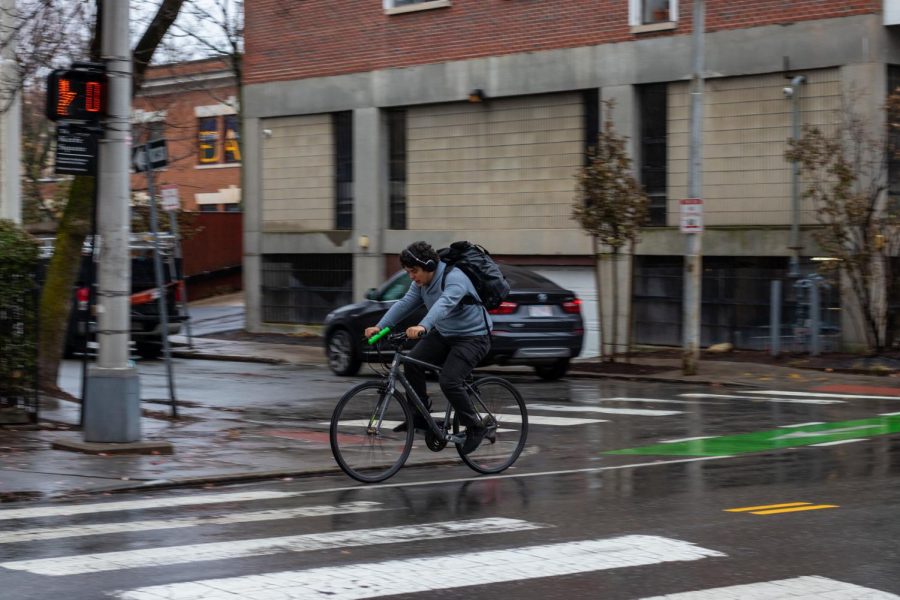Students Bike to School Amid Concerns About Bike Safety
On a scale from one to ten, most CRLS students think bike safety is a six or seven.
December 8, 2019
Biking to school is a common form of transportation among CRLS students. It is a quick way to get to school that can be much faster than driving or public transportation. However, biking comes with some risks. In a Register Forum survey, most CRLS students rated the safety of biking in Cambridge between a 5 and a 7 out of 10, citing unsafe unsafe drivers and the lack of bike lanes as reasons for their ratings. Furthermore, 47% of CRLS students have been involved in some sort of bicycle accident, which suggests that even though the city has done some things to improve the safety of biking in Cambridge, there is more that could be done.
Biking in the city can be dangerous for a few reasons. There are many hazards including motor vehicles, pedestrians, other cyclists, items in the bike lane, and sometimes the complete lack of a bike lane, pinning cyclists between traffic and parked cars. In an attempt to increase the safety of biking, the city has implemented bike lanes that instead of being between parked cars and traffic are set between parking spaces for cars and the sidewalk,. However, on many streets, there isn’t enough room to arrange bike lanes in this way, so the change is a fairly limited response to concerns about bike safety. In addition, having bike lanes between parked cars and the sidewalk could increase the possibility of getting “doored”, as most passengers on the right-hand side of the car are not used to checking for bikes before opening their door. Cambridge has also created shared bike lanes along Massachusetts Ave in North Cambridge. These designated lanes are used by bikes and the MBTA buses running along the street. These shared lanes help give bikers enough space to be away from the moving traffic but also put them in danger of buses, whose drivers cannot see behind the bus.
According to a 2012 study by ScienceNordic, biking to school can be beneficial to student learning. Students who biked to school scored better on a simple concentration test than those who didn’t. These results were echoed by a 2016 study from the British Journal of Sports Medicine, which concluded that any physical activity helps improve academic concentration and performance. In addition, students who biked to school had about 3% more physical activity than those who didn’t. That translates to about an extra 25 minutes of exercise a day.
In the Register Forum survey, some CRLS students voiced their concerns about the accessibility of biking to school. A bike costs money, as do the necessary accessories to safely bike around. In addition, there are more bikes in front of the school than designated places to lock your bike up. Senior Nacie Loh said “CRLS needs more bike racks, especially next to the Arts Building.”. She continued, saying, “It would also be cool to have a subsidized bike-buying program, to make it a more accessible method of transportation.” CRLS currently doesn’t offer anything of the sort, but considering the number of students who already bike, and the benefits of biking to school, it could be an effective program. . Junior Elena Cooper also stated that a possible solution would be to “offer free [or] cheaper lights and helmets for students.”
This piece also appears in our November 2019 print edition.








